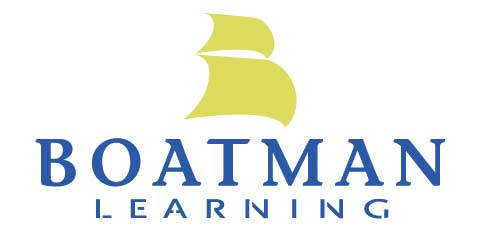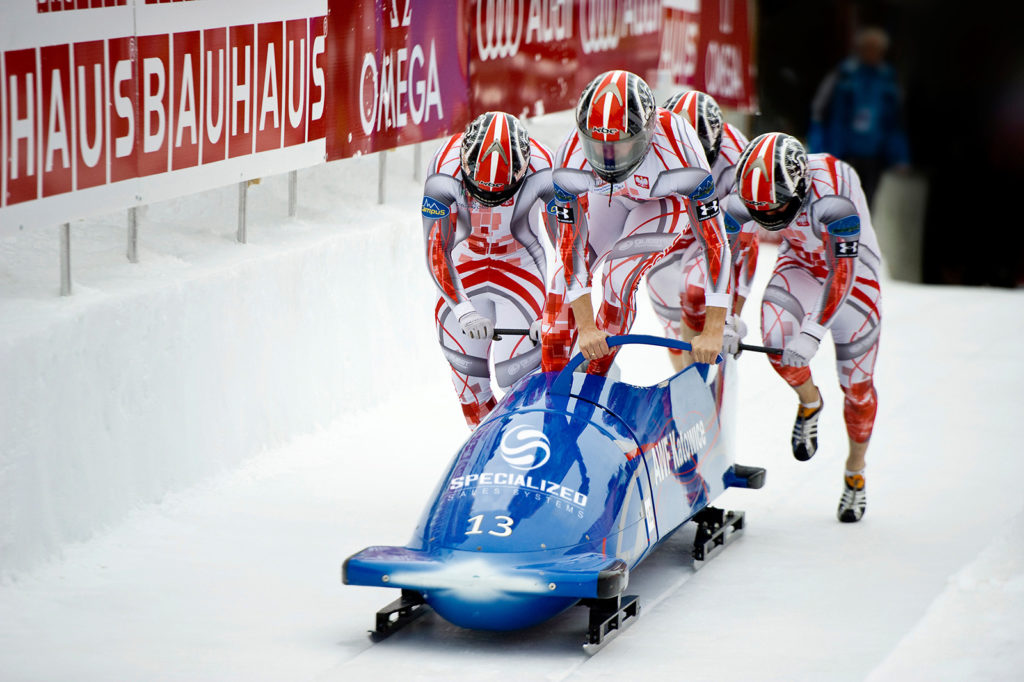Companies spend a massive amount of time, energy, and money on sales training, only to find the vast majority of the effort wasted. If you’ve ever been to sales training where the manager or facilitator exhorts sellers to take “one good idea” from an entire day (or two) of training, you know the story.
Why does so much sales training get wasted? There are three main issues:
- The environment is not right for sales training
- Training execution is flawed
- Salespeople revert to “business as usual” after training
We can empathize – we’ve spent over 40 combined years solving for why training doesn’t stick. And from the hundreds of sales transformations we’ve helped with, some best practices stand out in the companies that have seen the most success. Here we give you three crucial factors you can address to reduce training waste and get more results out of your sales training effort.
But first…
Selling = Bobsledding??
Think of the salesperson as the driver of a four-man bobsled. The driver (seller) isn’t the only person involved, but they steer the sled (your solutions) down the track (the sales/buying process), and they have the most impact on whether races (sales) are won or lost and people get medals (paid).
In this analogy, sales training is driver training – you’re trying to teach your sellers to go faster and win more. But just as in bobsledding, where victory or defeat can hinge on a lot of different factors, everything counts in B2B selling. You must optimize the entire system for sales training to have a meaningful impact.
Sometimes things are obvious and still they must be said: Having competitive solutions matters the most. if you don’t have a competitive sled, no amount of driver (sales) training will matter. But sellers with superior products lose sales to inferior competitors every day, just like great bobsled drivers lose races. And it’s not always about price, although your salespeople may believe it is!
How to Leverage What You’re Doing Now
If you’re reading this far into this article on this subject, you’ve likely done or are doing some sort of sales training and coaching now. Here are strategies you can employ today – using your current sales process, method, and training – that will coax as much speed as possible out of your own bobsledding – that is, sales – team.
For each strategy, we’ll list a set of possible tactics, but this is not a prescription – your mix will vary. If you’re renting training today, it may cost you more licenses and facilitation fees, but it will be worth it. (If you’re not ecstatic about your sales methodology or relying on outsiders for sales training, let’s discuss.)
Strategy 1: Focus on Getting Good at Taking the Temperature
Actually, in bobsledding, it’s more than temperature – humidity and barometric pressure also matter greatly, as they influence the condition of the ice, and thus how the sled is tuned. So bobsledding teams get good at, and diligent about, taking the measurements that matter. And it’s not all on the driver, either – it’s a team effort.
That’s just like selling!
In sales, good diagnostics involves more than salespeople asking about needs that lead to your solutions – it’s about everyone possible getting an accurate read on the environmental factors that influence your sales process and your prep. That means things like the interpersonal, intra-company, environmental, and political factors that have an impact on the customer’s buying process.
Action Ideas:
- Focus questioning methods on understanding customer politics
- Teach sales teams how to weave in buying structure questions
- Role play having “breakthrough talks” where you learn how it really works
- Arm sales teams with research on the climate
- Use customers’ org charts as the basis for influence-mapping
- Make it easy and quick to collect data on politics, relationships, and climate
Strategy 2: Get Good at Tuning Your Sled
What do we mean by “tuning your sled”? In bobsledding, the runners on the bottom of the sled mean a lot – less friction equals more speed. It’s such a focal point, in fact, that teams measure runner width and temperature many times before the race (thinner and warmer equals faster, too). Bobsled teams spend much of their prerace focus selecting the runners – where the sled touches the ice. In bobsledding, smoothness definitely counts.
Why, yes, that does sound very analogous to selling!
In the sales process, the experience the prospect has with your solution – the Prospect Experience – is equivalent to where the ice touches your sled. Therefore, every aspect of their contact with you needs to be polished and smooth.
Focus on the Prospect Experience (PX), not necessarily the User Experience (UX) as a whole. Yes, you want your solution to work perfectly once they become your customer, but it won’t – stuff happens. What’s crucial is that the prospect’s interface with your solutions – where the runner touches the ice – is flawless.
Some aspects of PX may be unique to you, and some of these ideas may not be applicable – again, this is not a prescription, it’s a set of options.
Action Ideas:
- Make salespeople present/demonstrate in high-stakes simulations
- Conduct actual dress rehearsals of key customer interfaces – not just presentations!
- Train technical SMEs on sales method, process, and skills
- Train customer service on your sales method and language
- Arm salespeople with the right sales collateral for the situation
- Create “gold standards” for proposals, quotes, pilots and trials and measure to them
- Coach the coaches responsible for reducing sales “friction” and increasing speed
Strategy 3: Optimize Your Sales Participation
Another way bobsled teams tune their sled is by managing weight. For example, in the four-person bobsled, sleds must weigh a minimum of 463 pounds (210 kilograms) when empty, maximum of 1,389 pounds (630 kilograms) with crew and equipment. Because more weight helps the sled go down the hill faster, the key is to get right up to the line – but not over. So, bobsled teams spend time weighing each crewmember, adding ballast, and strategically distributing weight to optimize performance.
I don’t know about you, but that sounds like selling to me!
The success of your sale depends in part on these same two things: Optimal weight and optimal weight distribution.
“Weight” is having the right people involved, from technical to operational to executive. Do they have enough gravitas? Do they bring enough value? And “Weight distribution” is where and when your people are deployed in the sales process. Are you bringing your leaders in at the right time, or when companies typically do?
Action Ideas:
- Use questioning methodology to discover who the customer needs to see when, and why
- Agree on a gold standard for sales meeting roles and responsibilities, and coach to it
- Use the customer’s org chart and requirements to create matchup strategy and schedule
- Train executives on how to leverage their status beyond sharing information
- Establish clear protocols for communication and decision-making, and hold to them
- Use sales methodology to help sellers improve at making the internal sale for resources
- Coach coaches on how to plan, execute, and review major opportunities
Summary: In Bobsledding and Sales, Focus Training on Preparation
If you’ve noticed anything in this article (besides the airtight analogy!), it’s that we’re recommending you look at how you’re preparing your teams to prepare. In our experience, focusing on these strategies will help you get more mileage out of any sales training you do by optimizing the system they live in. Good luck!

